Parabola (Lecture-02)
Equation of Normal
| Parabola | Point form | Pt.of contact | Parametric form | Point of contact | slope Form | Pt.of contact |
|---|---|---|---|---|---|---|
Equation of normal to the parabola
Properties of Normal
1. If the normal at the point
2. If the normal at the points
3. No normal other than axis passes through focus.
Important Properties :
- If the tangent and normal at any point ’
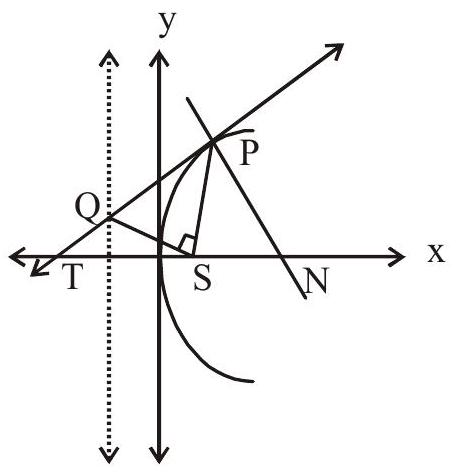
- The portion of a tangent to a parabola cut off between the directrix & the curve subtends a right angle at the focus.
- Any tangent to a parabola and the perpendicular on it from the focus meet on the tangent at the vertex.
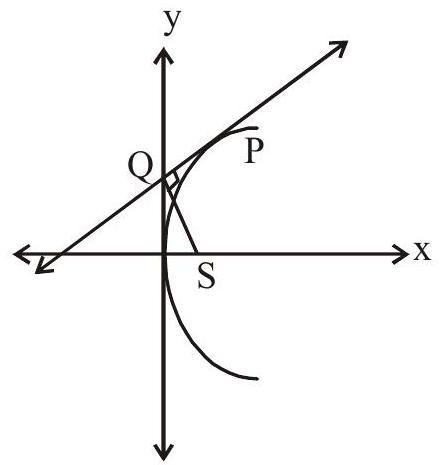
- If the tangents at
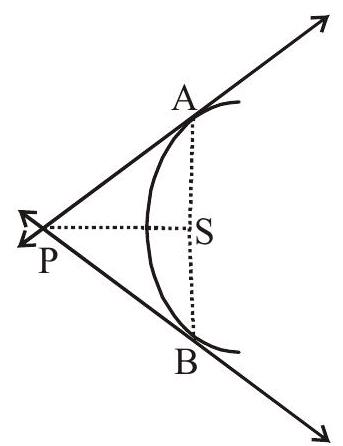
- The area of the triangle formed by three points on a parabola is twice the area of the triangle formed by the tangents at these points.
Conormal points:
Let
Equation of normal is
If passes through
Suppose
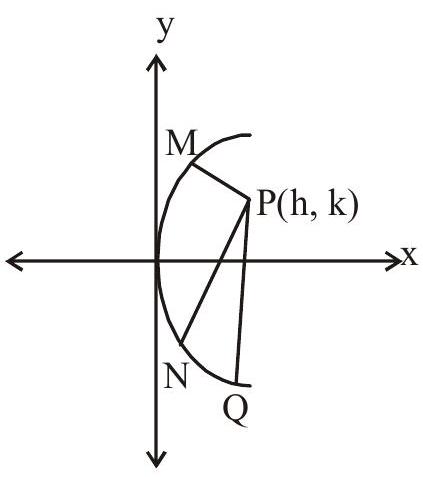
So maximum three normal say PM, PN, PQ drawn through P. Points M, N, Q are called conormal points.
- The algebraic sum of ordinates of the conormal points is zero.
Let the coordinates of conormal points be
- Centroid of the triangle formed by conormal points lies on the axis of parabola.
Let coordinates of conormal points be
Then centroid is
Since sum of ordinates is zero. Therefore centroid lies on the axis of parabola.
Chord of Contact
Let
Equation of tangent at
Equation of chord whose midpoint
Equation of
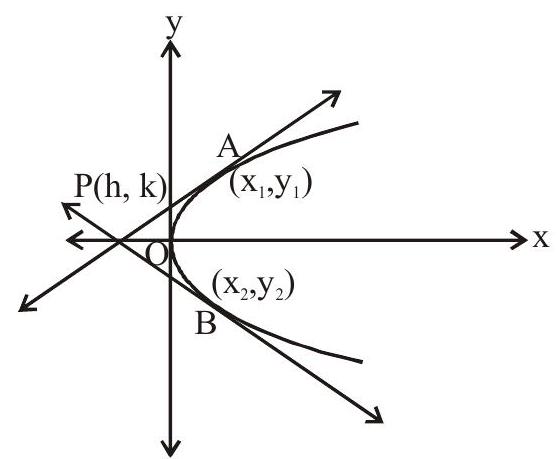
PI is incident ray then PS is reflected ray. So any ray incident parallel to axis of the parabola after reflection it passes through focus.
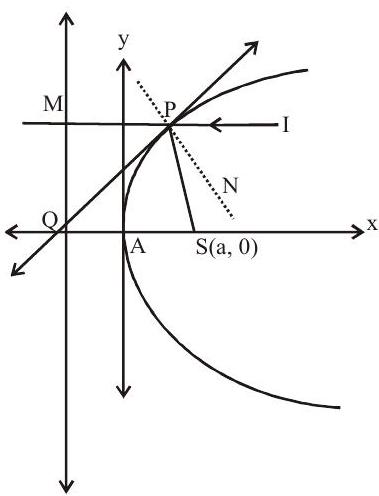
Example: 17 If the chord of contact of tangent from a point
(a) Parabola
(b) Hyperbola
(c) ellipse
(d) Circle
Show Answer
Solution: Let the point
Now this chord is tangent of parabola
Locus
Answer: b
Example: 18 Let
(a)
(b) the point
(c) the point
(d) None of these
Show Answer
Solution:
Let
area
Area is maximum when
Coordinates of
Answer: c
Example: 19 Minimum area of circle which touches the parabola’s
(a)
(b)
(c)
(d)
Show Answer
Solution:
tangent at point.
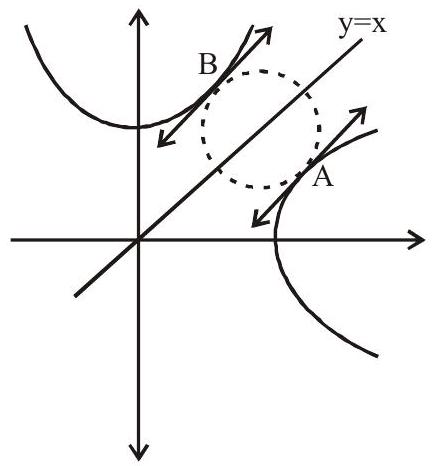
Area of circle
Answer: a
Example: 20 The equation of the common tangents to the parabola
(a)
(b)
(c)
(d)
Show Answer
Solution: Let
Equation of tangent are
Answer: a,b
Example 21.
| Column I | Column II | ||
|---|---|---|---|
| i. | Area of |
(a) | 2 |
| ii. | Radius of circum circle of |
(b) | |
| iii. | Centroid of |
(c) | |
| iv. | Circum centre of |
(d) |
Show Answer
Solution: Equation of normal is
It passes through
Points are given by
i.e.
area of
Centroid
Circum centre
Comprehension based Questions (Exampels 6 to 8)
Comprehension 1
Consider the circle
Example 22. The ratio of the area of the triangles
(a)
(b) 1:2
(c)
(d)
Show Answer
Solution: Point of intersection of circle & parabola
Tangent to the parabola at
Tangent to the circle at
Answer: c
Example 23. The radius of the circum circle of the triangle PRS is
(a) 5
(b)
(c)
(d)
Show Answer
Solution: area
Answer: b
Example 24. The radius of the in circle of the triangle
(a) 4
(b) 3
(c)
(d) 2
Show Answer
Solution:
Answer: d
COMPREHENSION 2 (EXAMPLES 25 TO 27)
If
25. If
(a)
(b)
(c)
(d) 1
26. If
(a) 1
(b)
(c)
(d)
27. If
(a)
(b)
(c)
(d)
Show Answer
Solution:
Answer: c
If
Answer: b
If
Since it lies on the line
Exercise
1. The point
(a)
(b)
(c)
(d)
Show Answer
Answer: c2. The shortest distance between the parabola
(a)
(b)
(c)
(d)
Show Answer
Answer: a3. If normals are drawn from a point
(a)
(b)
(c)
(d)
Show Answer
Answer: c4. If
(a)
(b)
(c)
(d)
Show Answer
Answer: b5. The equation of the tangent at the vertex of the parabola
(a)
(b)
(c)
(d)
Show Answer
Answer: d6. The common tangent to the parabolas
(a)
(b)
(c)
(d)
Show Answer
Answer: b7. The shortest distnae between the parabolas
(a)
(b) 2
(c) 3
(d) none of these
Show Answer
Answer: a8. The largest value of a for which the circle
(a) 4
(b)
(c)
(d)
Show Answer
Answer: dMultiple choice questions with one or more than one correct answer.
9. Let
(a)
(b)
(c)
(d)
Show Answer
Answer: b, c10. The tangent
(a) vertex is
(b) directrix is
(c) latus rectum is
(d) focus is
Show Answer
Answer: a, d11. Match the following :
Consider the parabola
| Column I | Column II | ||
|---|---|---|---|
| (a) | Equation of tangent can be | p. | |
| (b) | Equation of normal can be | q. | |
| (c) | Equation of chord of contact w.r.t. any point on the directrix | r. | |
| (d) | Equation of chord which subtends right angle at the vertex | s. |
Show Answer
Answer:Assertion and Reasoning
12. Statement 1 : The curve
Statement 2 : A parabola is symmetric about its axis.
(A) Statement 1 is True, Statement 2 is True; Statement 2 is a correct explanations for statement 1 .
(B) Statement 1 is True, statement 2 is true, statement 2 is not a correct explanation for statement 1 .
(C) Statement 1 is true, statement 2 is false.
(D) Statement 1 is false, statement 2 is true.










